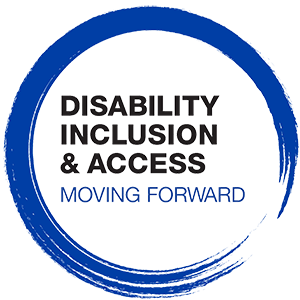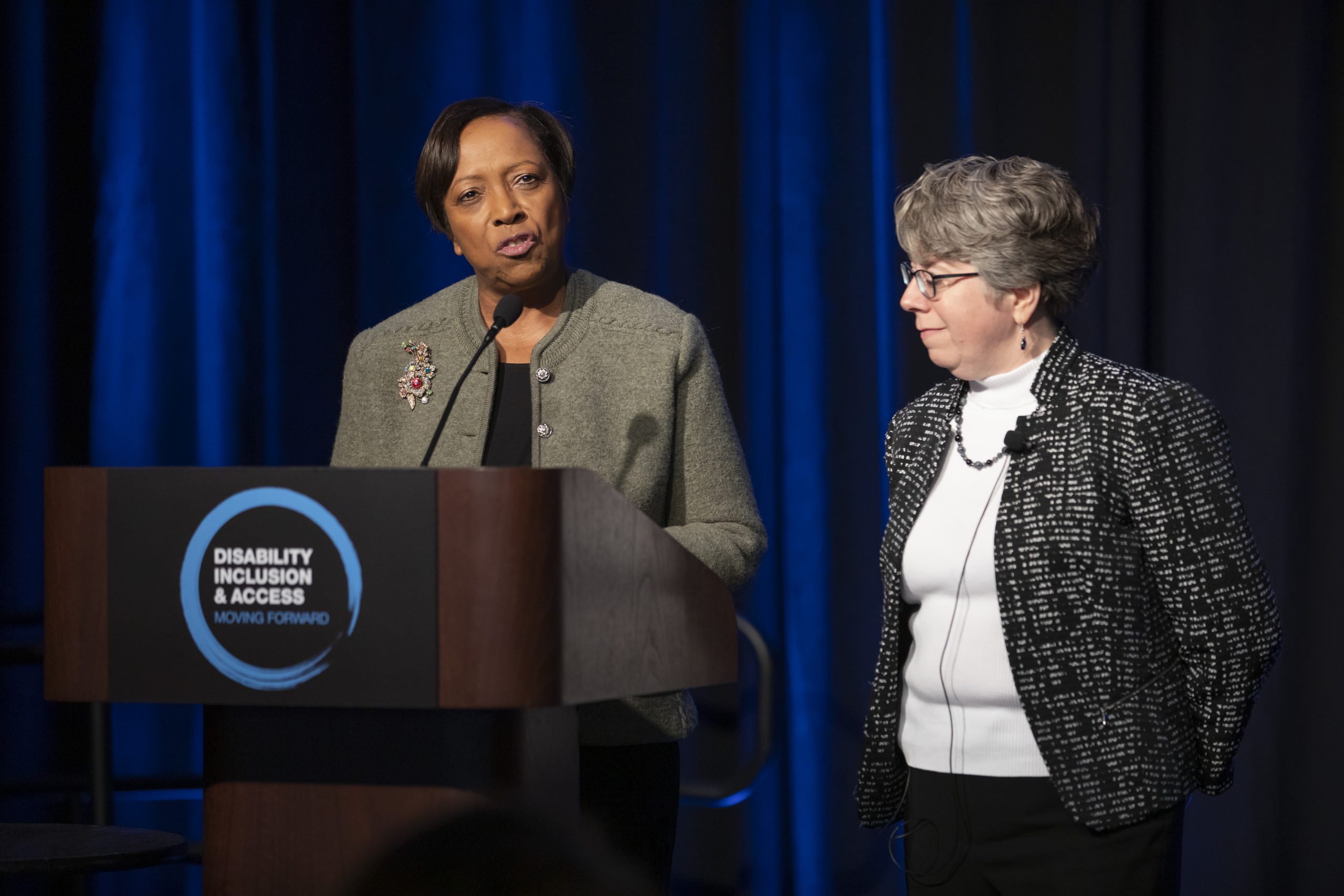The Chicago Community Trust developed a comprehensive, 128-page publication for the 25th anniversary of the Americans with Disabilities Act in 2015, “Renewing the Commitment: An ADA Compliance Guide for Nonprofits.” It’s well-organized and very helpful for those who appreciate having everything in one place. Contents include: overview of the relevant laws; sample policies; compliance checklists; etiquette in communicating with people who have various disabilities; recommendations for facilities upgrades.
Below are links to other accessibility resources, organized by topic and including brief descriptions.
Conducting a self-assessment of your organization’s accessibility
Improving Accessibility of Social Media
Improving Website Accessibility
Creating Accessible Documents
Creating Accessible Videos
Planning an Accessible Meeting or Event
Providing Accommodations
Conducting a self-assessment of your organization’s accessibility
A good first step is to conduct a basic self-assessment to identify what you have in place, and where improvements need to be made. The Chicago Community Trust’s “ADA Compliance Guide for Nonprofits” includes a self-assessment checklist. In the table of contents, look for “Taking Stock: An ADA Quick-Check Tool for Nonprofits.”
The MacArthur Foundation also provided a useful Accessibility and Inclusion checklist developed for the semi-finalists in the 100&Change competition to help them move to fuller inclusivity. This tool is less comprehensive than the one developed by the Chicago Community Trust, but it contains a number of important additions.
If you’re purchasing new assistive technology, you may want to review this Partnership on Employment & Accessible Technology (PEAT): Buy IT!—Your Guide for Purchasing Accessible Technology
Improving Website Accessibility
“Web Accessibility Basics for Nonprofit Leaders” is a short non-technical guide for people who want to understand basic concepts/issues.
The Web Accessibility Initiative (WAI), which developed the “Web Content Accessibility Guidelines,” or WCAG, is one of the best resources on web accessibility, and has a wealth of information and resources. Its website is well-organized and easy to navigate, which makes it easy to find information according to audience types (policymakers, designers, content writers, etc.) or areas of interest. WAI’s information ranges from awareness-level materials (see “Accessibility Fundamentals,” including the collection of “Web Accessibility Perspectives” videos that are one minute each and illustrate various web usability issues for people with disabilities) to in-depth and highly technical information. Each of the initiative’s other main topic areas – Planning/Policy, Design/Develop, Test/Evaluate, Teach/Advocate, and Standards/Guidelines — start out with basic introductory and overview information, and move on to more detailed information and resources.
- Website designers should refer to the “Web Content Accessibility Guidelines” (WCAG) 2.1, last updated in June 2018.
- Additionally, there are a number of online “accessibility checkers” that will scan a website and provide feedback about compliance with WCAG guidelines, including WAVE Web Accessibility Evaluation Tool and Lighthouse, which is a developer tool that is built into Chrome.
- Online tools that can test websites for accessibility to screen readers, which read content aloud to people with vision limitations, include ChromeVox – Giving Voice to Chrome and NonVisual Desktop Access (NVDA).
- All web designers are encouraged to supplement any mechanical review with user testing by people with disabilities. Blind and Vision Rehabilitation Services of Pittsburgh can assist.
Creating Accessible Documents
Electronic documents:
Microsoft products (Word, PowerPoint, Excel, and Adobe) all have built-in accessibility tools that make it easy to create documents that are accessible to people who use screen readers to access content (for instance, people who are blind). University of Washington offers this guide to creating accessible documents, which explains what the tools are, why they are important, and how to use them.
Apple offers this guide to creating accessible documents using Pages, Numbers, or Keynote apps.
Hard copy documents or reports:
The American Council of the Blind offers these best practices for creating large-print versions for people with low-vision.
Reports can also be made available in braille. Local brailling services are listed under “Providing Accommodations” below, or you can search “braille services near me.”
Creating Accessible Videos
Rooted in Rights developed guidelines for creating accessible videos that provide information on best practices around captions, audio descriptions, transcripts, media players and more.
Planning an Accessible Meeting or Event
Chicago Community Trust offers this online guide: “Make Your Events Truly Accessible and Inclusive.”
Microsoft has an Accessible Events Guide.
A Guide to Planning Accessible Meetings was originally published by Independent Living Research Utilization and was recently updated by the Mid-Atlantic ADA Center.
Providing Accommodations
If a participant in your program requests an accommodation, it is the responsibility of your organization to make the arrangements and to pay for the requested service. Providers in the Pittsburgh region include the following:
Live Captioning
- Diana Brandin Realtime Captioning & Sign Language Services LLC
dba: OnPoint Captioning & Sign Language Services LLC
O: (818) 279-8136 db.realtimecaptioning@gmail.com www.OnPointCaptions.com
- The Kyle Duarte Company, Interpreter – English, ASL, IS, French, Spanish NIC Certified. O: (202) 575-3250, hello@kduarte.com, www.kduarte.com
American Sign Language (ASL) Interpreting:
- Center for Hearing and Deaf Services
1945 Fifth Avenue
Pittsburgh, PA 15219-5543Phone: 412 281-1375
https://www.hdscenter.org/interpreting-services/american-sign-language - Sign Language Interpreting Professionals (SLIP)
PO Box 313
Glenshaw, PA 15116-0313
Phone: 412 400-2021
Email: SLIPrequests@gmail.com
http://www.signlanguageinterpretingprofessionals.com/
Video Remote Interpreting (VRI):
VRI is available anywhere you have internet access and a webcam.
- Sign Language Interpreting Professionals (SLIP)
Phone: 412 400-2021
Email: SLIPrequests@gmail.com
http://www.signlanguageinterpretingprofessionals.com/
Communications Access Realtime Translation or CART:
CART is real time translation of the spoken word into text that can then be displayed on a screen or on laptops, smartphones or tablets.
- CART Solutions LLC
PO Box 15458
Pittsburgh, PA 15237-7458
Phone: 412 385-3085
Email: CARTSolutionsLLC@gmail.com
http://www.cartsolutionsllc.com/
Tactile interpreting:
Spoken word is translated into sign language, signed into the palm. This is often used by someone who is Deaf/Blind.
- Center for Hearing and Deaf Services
1945 Fifth Avenue
Pittsburgh, PA 15219-5543
Phone: 412-281-1375
https://www.hdscenter.org/interpreting-services/american-sign-language/ - Sign Language Interpreting Professionals (SLIP)
PO Box 313
Glenshaw, PA 15116-0313
Phone: 412 400-2021
Email: SLIPrequests@gmail.com
http://www.signlanguageinterpretingprofessionals.com/
Braille materials
Rates and turnaround times vary, when providing electronic documents to be brailled. In general, one to three weeks is the minimum time range, depending on the size and complexity of the document.
- Blind and Vision Rehabilitation Services of Pittsburgh
1816 Locust Street
Pittsburgh, PA 15219
Phone: 412 368-4400
Contact: Barb Peterson
Email: bpeterson@pghvis.org - Western PA School for Blind Children
201 N Bellefield Ave
Pittsburgh, PA 15213
Phone: 412 621-0100
Contact: Dr. Heidi Ondek, Superintendent


Improving Accessibility of Social Media
Your organization’s goal should be to provide an equivalent experience to all users who follow your social media channels, including those who can’t hear or see your content. You’ll want to provide captions on all videos or audio recordings, and alternate text descriptions for all photos/important visual elements.
Hootsuite offers, “Everything You Need to Know About Inclusive Design for Social Media,” including tips for Twitter, Facebook, Instagram, YouTube, LinkedIn, Pinterest, and Snapchat.